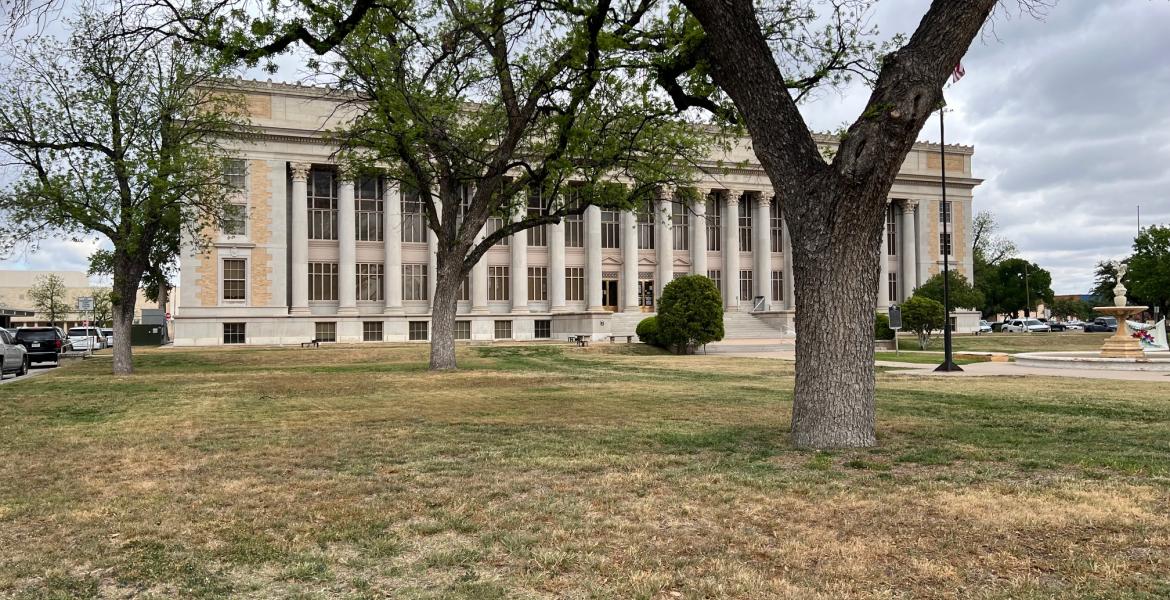SAN ANGELO, TX — Mayor Brenda Gunter declared the 4 weeks starting Sept. 15, 2020 until Oct. 15, 2020 as Hispanic Heritage Month in San Angelo. She was flanked by the Lake View High School Mariachi Band on the steps of City Hall Wednesday morning as the month-long observance began after the mayor read the proclamation.
“Hispanic” is a broad term covering multiple nationalities. However, with the Texas-Mexico border nearer to us than other nations, much of the Hispanic heritage here originates in Mexico.
Wednesday was Diez Y Seis de Septiembre, a celebration of Mexico’s independence. Why should citizens in the U.S. who are not of Mexican descent care? Well, Mexico’s independence impacted U.S. and Texas history in a very big way. Please, stay with me and read on!
The founder and creator of what is now called Mexico was Hernando Cortez (1485-1547).
The Aztec Empire he liberated in 1521 was about the size of Kansas, some 80,000 square miles. Over the next 200 years, viceroys appointed by the King of Spain expanded the colony of Nueva España, or New Spain, which a part of eventually became modern-day Mexico and then some, by twenty times, through appropriating land from Indian tribes primarily, to 1,650,000 square miles.
Back in Europe, when the French lost the Seven Years’ War, by the Treaty of Paris in 1763, they ceded their territory of Louisianne (named after Louis XIV), much of the North American land mass west of the Mississippi, to England which then awarded it to Spain for being England’s ally in the war. This added another 828,000 square miles to the Viceroyalty of New Spain.
When Napoleon seized power in France after the French Revolution, he wanted Louisianne back for France. So he made a secret deal in 1800 with King Charles IV of Spain (actually, he made the deal with his wife Queen Maria Amelia and her lover Manuel de Godoy, for Charles was mentally challenged) to trade via a “retrocession" all of it for control of Tuscany in Italy. This was called the Treaty of Ildefonso.
Meanwhile, for the U.S., President Thomas Jefferson’s spies in Paris found out about the secret treaty by 1801, and also learned that warmongering Napoleon needed some fast cash. He had lost his cash cow of Haiti and its sugar exports in a rebellion and might be open to a deal over Louisianne, Jefferson strategized.
It worked!
The negotiations between the U.S. and Napoleon were concluded on May 2, 1803. The deal grew the territory of the U.S. by 828,000 square miles and U.S. taxpayers paid only $15 million, or about three cents an acre. This was called The Louisiana Purchase.
Meanwhile, back in Spain, Charles IV abdicated his throne in 1808 in favor of his son Ferdinand VII, who was so pro-British/anti-French that Napoleon invaded Spain and replaced him with his older brother Joseph Bonaparte as King.
The people of Spain quickly rebelled, which left the Spanish government in chaotic breakdown.
The turmoil back in the Spanish motherland by 1810 gave the people of New Spain cause to rebel against their European colonial rulers.
By the time Ferdinand VII regained the throne in 1814, he was desperate for money to finance suppressing the rebellion in New Spain. His government had challenged the legality of the entire Louisiana Purchase, claiming France had no right to sell it and never owned it anyway, since the secret Ildefonso treaty was invalid.
Like his predecessor Jefferson, President James Monroe saw more opportunity.
By 1819, at Monroe’s instructions, U.S. Secretary of State John Quincy Adams concluded a deal with Ferdinand’s emissary, Spanish Foreign Minister Luis de Onis, called the Adams-Onis Treaty. The U.S. paid Spain $5 million for the 70,000 square miles of Spanish Florida, and Spain recognized the validity of the Louisiana Purchase, thus settling the US-New Spain border.Here’s the map of the treaty (the area of the Louisiana Purchase is called the Missouri Territory):

Here’s the map of the treaty (the area of the Louisiana Purchase is called the Missouri Territory), the Adams-Onis Treaty
Meanwhile, back in New Spain, Ferdinand was free to suppress the New Spain rebellion. Yet, the general in charge of the suppression who was infamous for his brutality, Augustin de Iturbide (1783-1824), decided to rule New Spain all for himself. In 1821, he made a deal with the rebels, who put him in charge of their rebellion. Ferdinand capitulated, and on August 24, 1821, his emissary signed the Treaty of Cordoba recognizing the sovereign independence of New Spain.
You’d think the real date of Mexico’s Independence should be August 24, however, just as the U.S. rebellion against England is marked as July 4, the day the Declaration of Independence was signed and the Revolutionary War began, Mexico’s Independence is marked by the date their rebellion began.
Recall that the rebellion in New Spain against colonial control from Madrid began in 1810. By tradition, the spark came in the wee hours of September 16, when a Catholic priest, Father Miguel Hidalgo, called for his flock in the small town of Dolores in Guanajuato state to rebel against their Spanish rulers.
Father Hidalgo’s Grito, or cry of rebellion, is why Mexicans celebrate September 16, or Diez Y Seis de Septiembre, as their July 4th.
The independence didn’t last long, however. Mexican revolutionary Augustin de Iturbide soon declared himself emperor over Mexico. His new self-declared title and name was Emperor Augustin I. Within a year, one of this generals, Antonio Lopez de Santa Anna (1794-1876), overthrew Augustin, and an era of rebellion and unrest in Mexico began.
Santa Anna was successful in brutally suppressing rebellions in most Mexican states except one, Tejas, which became The Republic of Texas in 1836.
The purpose of this short history narrative is to convey how closely tied the history of Mexico is with Texas and U.S. history. Thanks to Dr. Jack Wheeler for his help simplifying the historical narrative for a short article. Wheeler is an adventure traveler and author of a very good book surrounding Mexico’s history, The Jade Steps (on Amazon Kindle or Paperback here).
A Hispanic Heritage Month in San Angelo social media page is maintained to celebrate and honor Hispanic contributions made to the city of San Angelo. Stay updated throughout the month by liking and following their Facebook page here.
Subscribe to the LIVE! Daily
Required






Comments
What do you think about a white heritage month? Maybe us white folk can celebrate our heritages without repercussion??? LMAO yeah right
- Log in or register to post comments
PermalinkPost a comment to this article here: